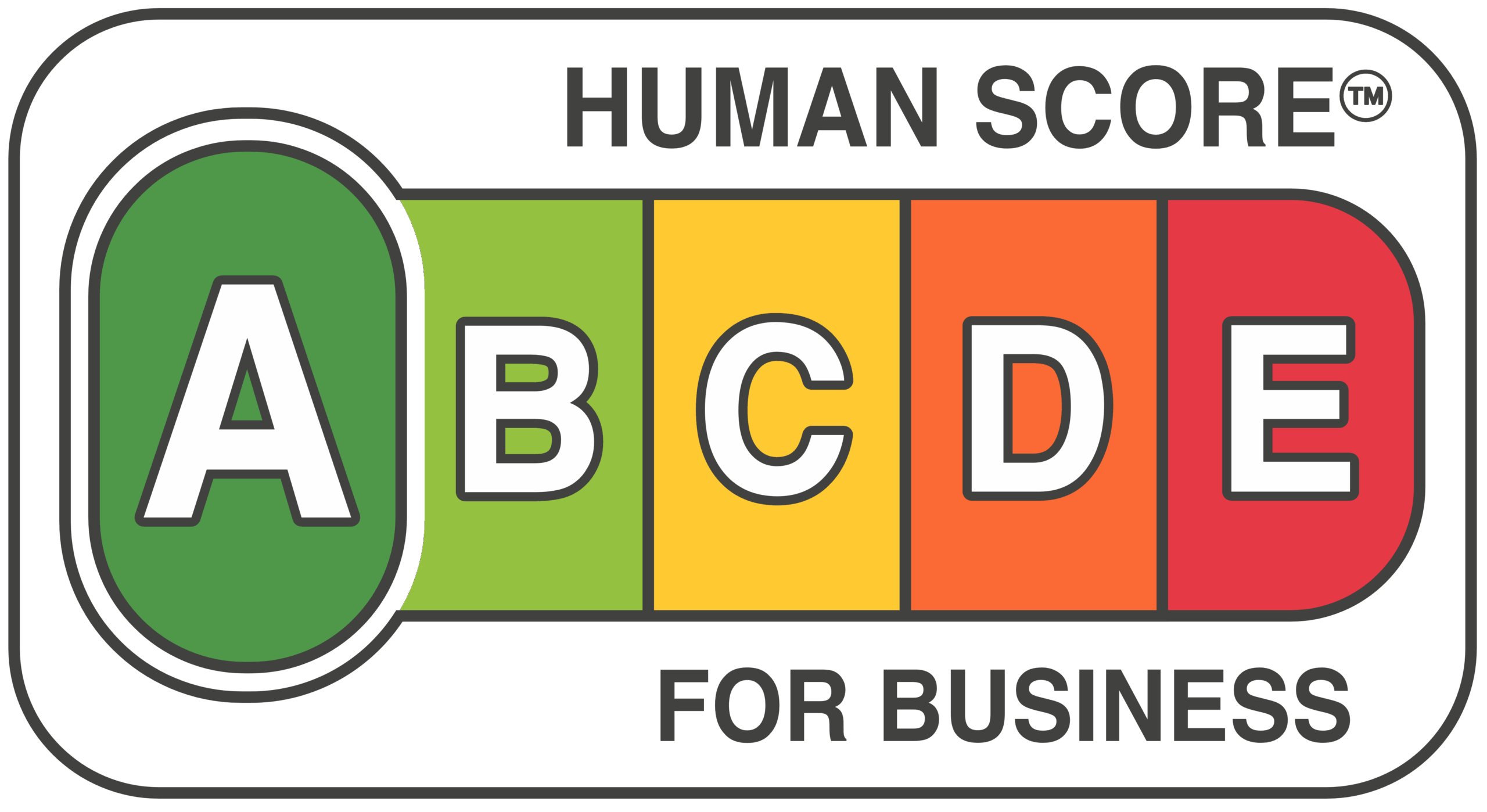What if change management wasn’t a dreaded necessity, but an open invitation? One that unlocked energy, innovation, and alignment across your entire organization?
That’s not just a dream. It’s the shift we’re already seeing in forward-thinking businesses. Those who know today’s transformation isn’t just about technology; it’s about humans. And no change in recent history compares to the one leaders face right now: AI implementation.
The Leadership Dilemma
This change and AI implementation is the new leadership dilemma:
Do nothing, and risk irrelevance. Do something, and risk losing your soul or your people.
Not all leaders are resisting AI; many are fully aware of its potential. But while some stall due to fear of failure, others rush forward without a thoughtful plan, driven by fear of missing out. According to Gartner, while 69% of organizations are making some form of investment in agentic AI, most of these are early-stage pilots or proofs of concept driven more by hype than by proven value. Gartner predicts that over 40% of these projects will be canceled by 2027 due to high costs, unclear ROI, or unmanaged risks (Gartner, 2025). On the other end of the spectrum, companies like Klarna and Duolingo moved aggressively, only to face severe backlash and operational setbacks. Whether they’re resisting or rushing, fear drives many leaders. And the stakes are so damn high.
On one side is the fear of failure. And for good reason: over 70% of digital transformations fail (McKinsey & Company, 2020). That failure rate haunts leaders. It paralyzes progress. For many, it’s easier to delay AI than risk becoming the next cautionary tale.
On the other side is the fear of success. Even when leaders do see AI’s potential, many are afraid of what success might mean: massive layoffs, cultural backlash, reputational damage, and moral uncertainty. If AI makes our company more profitable but harms the local community or destabilizes broader economies, is that really a win? The ethical fog is real. Even leaders who are more concerned about profits than people are watching as other organizations waste money on failed pilots and costly, unfocused AI spending.
Beyond This-or-That: A Call for Innovative Thinking
Consider two high-profile companies that pushed through fear, threw caution to the wind, and embraced an ‘AI-at-all-costs’ mindset, believing fortune favors the bold. But in today’s climate, fortune doesn’t favor the bold. It favors the prepared. And these companies paid the price for mistaking speed for strategy.
Klarna replaced around 700 roles, nearly 40% of its workforce, with an AI-powered assistant built on OpenAI’s models. It touted cost savings and scale (Solutions Review, Fortune). However, by mid-2025, Klarna reversed course, rehiring human agents after customer service quality had plummeted. The CEO, Sebastian Siemiatkowski, admitted they had “focused too much on efficiency and cost” and undercut critical customer empathy (Customer Experience Dive). Humans don’t just bring empathy, they also deliver effectiveness, creative problem-solving, and the discernment to respond directly and decisively in the moment.
In early 2024, Duolingo adopted an “AI-first” strategy by off-boarding around 10% of its contracted translators and pivoting to AI for content creation and review (Data Ethics Club). Public backlash followed swiftly, with criticism of declining content quality and Duolingo even scrubbing its social media channels amid outrage (LinkedIn). CEO Luis von Ahn later clarified that it wasn’t about mass layoffs, but rather about shifting staff toward oversight, curriculum design, and creative leadership (Business Insider).
These aren’t failures of AI; they are failures of the company’s strategy and leadership. It’s this-or-that thinking, not both-and. It’s not AI versus people. It’s people empowered by AI, not deleted by it. What we need now is not binary thinking, but bold, human-centered innovation. Open-source is where leaders unlock the genuine opportunity for success with AI by channeling the spirit of open-source innovation within their organizations.
The Open-Source Opportunity
Think about how open-source software works. Developers worldwide contribute to a shared codebase. They test, improve, and expand on one another’s work. The result? Rapid innovation, greater usability, and a community of passionate contributors, all grounded in shared purpose.
Now, imagine if your organization approached AI implementation the same way. Instead of isolating decisions at the top or in the IT department, you open up the process, inviting the people who will use, support, and evolve the technology to help shape it from the start. Internally applying open-source thinking means tapping into the collective intelligence of your workforce. The benefits? Greater alignment, faster adoption, fewer implementation missteps, and more innovative, more sustainable AI use. When people help build the future, they commit more deeply to making it work.
That’s the spirit behind the Human Score.
Just as open-source software unlocks exponential value through its community, the Human Score unlocks it in your workforce. It’s a diagnostic and design tool that helps leaders see where to begin and how to move forward, not by guessing, but by engaging employees directly in the process.
The truth is, you don’t need another consultant to come in and tell you what’s broken; your employees already know this. You need a framework that helps you identify, with your people, where the friction is, where the potential lies, and how everyone can grow alongside the technology.
The Human Score does just that, across five core dimensions of human-centricity: Work Design, Structure, Culture, Fairness, and Decision-Making. These are the roots of organizational resilience. And they’re exactly where AI implementation either thrives or fails.
Why Human-Centered AI Implementation Works
Let’s break down what this looks like in practice, borrowing from our original open-source analogy:
1. Superior performance through collective intelligence
Change led by a few fails more than it succeeds (the stats prove it). But change led with your people fuels real momentum. It shifts from compliance (which I wrote about in this post on Slavery Mindset) to commitment. The Human Score diagnostic tool invites employees into the process, giving them a voice in shaping the role of AI within the organization. This employee involvement not only builds excitement but also increases accountability and sustainability.
2. The power of the crowd
Many hands and minds make light work. Co-creating your AI journey dismantles silos and fast-tracks innovation. Instead of ideas bottlenecking at the top, they bubble up from the front lines, where the real work happens. Moving leaders from this-or-that thinking to many innovative ideas to select from or implement based on what aligns with the current goals of the C-Suite and the organization’s overall vision.
3. A community with a shared purpose
When organizations actively include employees, they stop seeing change as something done to them and start seeing it as something built by them. That shift from compliance to ownership is the engine of any thriving culture, especially one embracing AI.
4. Transparency that builds trust
Open-source models succeed because they’re reviewed and tested by many. Similarly, AI implementation must be visible, understandable, and adaptable. The Human Score creates a shared language between leadership and employees, surfacing blind spots before they become costly. Building trust through the co-creation process.
5. Merit-based systems that reflect real value
Traditional metrics fall short in times of transformation. However, when you tap into creative potential, problem-solving, and collaborative thinking, you achieve better results and more equitable recognition. AI can automate the tasks. But humans? They bring the imagination. Innovative imagination, not metrics, brings value.
6. Elevated employee experience
When leaders see, hear, and invite people to shape the future, they thrive. And thriving employees don’t just adapt to change; they accelerate it.
The Time Is Now
AI implementation isn’t just a theoretical challenge; it’s real, and it’s happening right now. AI is not a tech problem. It’s a leadership challenge.
And that challenge starts with leaders starting with the right questions:
- Are we co-creating or commanding?
- Are we designing systems for machines, or empowering the humans who will use them?
- Are we starting with the human, where the true power of creative possibility lies?
If you want a more straightforward path forward, the Human Score is a powerful starting point. We are here to help you chart the course with your people, not around them. DM us for an appointment to learn more.

